Hydraulic Jacks for Railways
Railways Hydraulic Jacks
From lifting locomotives and railcars to assisting in track maintenance and emergency re-railing, BEMCO’s hydraulic jacks are engineered for heavy-duty performance, durability, and mobility. Their robust construction, precision control, and integrated safety features ensure efficient and secure railway operations-minimizing downtime and maximizing safety. Whether for field maintenance or depot-based servicing, BEMCO JACKS’s railway jacks are trusted tools that support the backbone of India’s rail infrastructure.
BEMCO JACKS delivers solutions that adhere to international standards across design, manufacturing, and testing. Among its wide product range, hydraulic jacks for railways stand out as a critical innovation, serving the demanding needs of the railway sector.
Enquire now
Our Hydraulic Jacks, Cylinders & Equipments
Looking for the best hydraulic jack for your industrial applications? Explore our range of hydraulic jacks and cylinders to find the perfect solution for your needs.
-
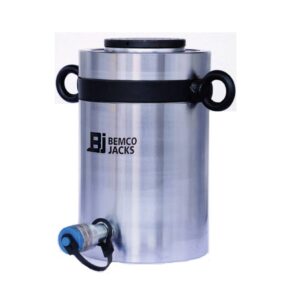
Single Acting, Plain Ram, Hydraulic Jacks
-
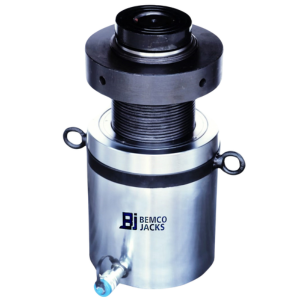
Single Acting Threaded Ram, Hydraulic Jacks
-

Double Acting, Plain Ram, Hydraulic Jacks
-
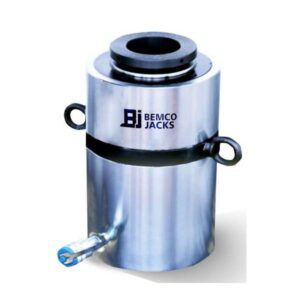
Single Acting, Hollow Ram, Hydraulic Jacks
-

Double Acting, Hollow Ram, Hydraulic Jacks
-

Flat Jacks
-

Short Stroke Jacks
-
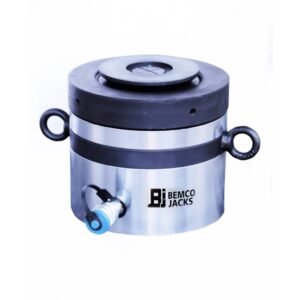
Single Acting, Span Jacks
-
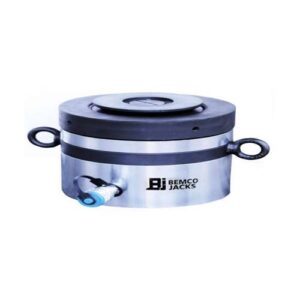
Ultra Low Height, Single Acting, Threaded Ram Hydraulic Jacks
-

Ultra Low Height, Single Acting, Plain Ram, Hydraulic Jacks
-
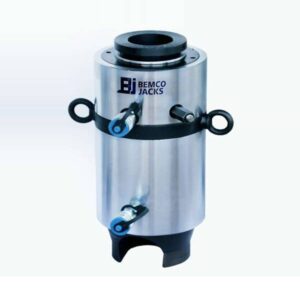
Bar Stressing Jacks
-

Mono Strand Stressing Jacks
-

Mono Strand Pulling Jacks
-
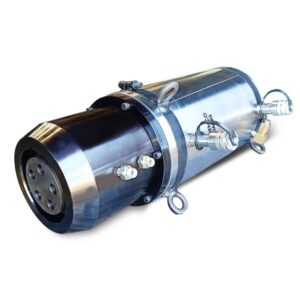
Multi Strand Stressing Jacks
-

Hydraulic Hand Pumps
-

Lifting & Swiveling Platform
-
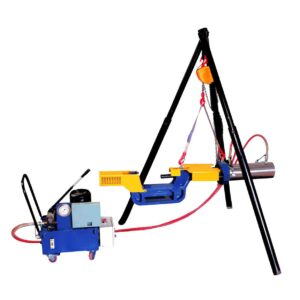
Track Pin Pusher
-
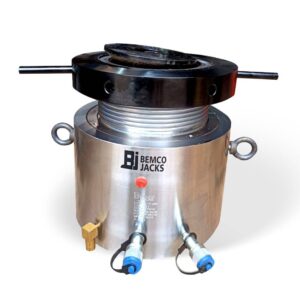
Double Acting, Threaded Ram, Hydraulic Jacks
-

Customised Hydraulic Cylinders
-

Vertical Strand Jack
-

Hydraulic Powerpack
Features and Benefits
Heavy-Duty Lifting Capacity
BEMCO hydraulic jacks are built to handle extreme loads with ease—perfect for lifting locomotives, railcars, and large industrial components. Their superior load-bearing capacity ensures reliable performance in the most demanding environments.
Engineered for Safety and Stability
Designed with integrated safety mechanisms such as overload protection, pressure relief valves, and locking systems, BEMCO jacks prioritize operator safety during every lift.
Precision and Control
These jacks offer smooth and controlled lifting operations, essential for delicate tasks like track alignment and component repairs. Precision engineering ensures accurate positioning with minimal error.
Rugged Design, Low Maintenance
Manufactured with high-grade materials and fewer moving parts, BEMCO jacks are durable, corrosion-resistant, and require minimal maintenance—making them ideal for long-term use in railway and industrial sectors.
Key Features of Hydraulic Jacks for Railways
Weight Limit
The maintenance for railroads is always heavyset, which means railways need powerful equipment. Hydraulic jacks for railways are purpose built to take big strain, even fully loaded locomotives, railcars, or entire railway tracks and their associated infrastructure are within the jacks capability.
Durability
Manufactured using robust materials, heavy-duty hydraulic jacks for railways withstand extreme weather conditions and frequent use. Their corrosion-resistant properties make them ideal for long-term applications in railway environments.
Precision
Railway components have to be repaired with optimal precision, especially during the lift. Railway track lifting jacks ensure precise alignment is achieved which, in turn, increases accuracy, and reduces error rates and overall operational costs.
Safety Features
Safety is a primary concern within the railway system. The hydraulic rail jacks feature overload protection, pressure relief valves, and locking mechanisms that, when utilized, ensures that lifting and other activities are done without risk of accidents occurring.
Types of Hydraulic Jacks Used in Railways
Loco Lifting Jacks
Loco lifting jacks are used to raise locomotives so they can be serviced. Fixed and mobile versions of these jacks are available to aid in locomotor and train maintenance.
Underfloor Lifting Jacks
As their name suggests, the jacks are installed under the ground level. They permit hoisting of train bogies and wagon units for examination and repair.
Screw-Type Hydraulic Jacks
Railway maintenance depots appreciate screw-type hydraulic jacks because they enable precise motion of the load being lifted, which makes these jacks another of the more popular options.
Toe Lifting Jacks
Toe lifting jacks are ideal when the lifting needs to be done at low-clearance positions. These are handy for raising fat bogies and other hefty railway constituents.
Portable Hydraulic Jacks
Portable hydraulic jacks are very light but powerful. These provide on-site lifting and aid in accomplishing quick, efficient repairs.
Re-Railing Jacks
Derailed trains require specialized equipment for recovery. Re-railing jacks are designed to lift and reposition derailed trains, playing a crucial role in railway accident management.
Benefits
Much Easier Business Processes
Minimizing manual labor and increasing the rate of lifting completion allows for more streamlined railway maintenance, which significantly lessens the period of service interruption.
Superior Safety
Enhanced stability and integrated safety features identify and mitigate both equipment malfunction and operator negligence during lifting and manipulation, which enables greater reduction in accidents.
Economic Efficiency
Making the decision to implement hydraulic jacks in the railways gives the benefit in money due to less spending in time-consuming manual handling and having less equipment downtime.
Greater Applicability
Hydraulic jacks are designed for a variety of purposes from lifting locomotives to track changing, rendering them as crucial equipment for railway maintenance teams.
Difference Between Electromechanical and Hydraulic Jacking Systems
| Features | Hydraulic Jacking System | Electromechanical Jacking System |
|---|---|---|
| Power Source | Uses pressurized fluid | Relies on motors and gears |
| Load Capacity | Handles heavier loads with smoother operation | Generally has a lower load capacity compared to hydraulic jacks |
| Precision | Provides stable lifting but with less fine-tuned control | Offers finer control over positioning but may not be as powerful |
| Durability | Fewer moving parts, making them more resistant to wear and tear | More mechanical components, leading to potential wear and tear |
| Maintenance | Requires regular fluid checks and pressure maintenance | Needs motor and gear servicing periodically |
Lifting & Swiveling Platform
What is a Lifting & Swiveling Platform?
A lifting & swiveling platform is a specialized device used in locomotive maintenance to lift, rotate, and position heavy railway components with precision and ease. These platforms facilitate efficient handling of locomotives, train carriages, and other critical railway equipment, reducing manual effort and improving workplace safety.
Efficiency in Locomotive Maintenance
By integrating lifting & swiveling platforms, railway workshops can handle repairs faster and with greater precision. These platforms allow railway engineers to access different parts of locomotives without extensive disassembly, significantly reducing downtime and enhancing productivity.
- Improved Accessibility: Lifting & swiveling platforms make it easier to access hard-to-reach areas, streamlining maintenance and repairs.
- Time-Saving Mechanism: By allowing seamless lifting and repositioning of railway components, these platforms help railway operators optimize their maintenance schedules.
- Reduced Manual Effort: Workers can operate these platforms with minimal physical exertion, lowering the risk of workplace injuries.
Customization for Different Loco Manufacturers
Different railway systems have unique requirements, and lifting & swiveling platforms can be customized to accommodate various locomotive models and maintenance needs. Customization options include:
- Adjustable Load Capacities: Platforms can be designed to handle different weight capacities based on locomotive specifications.
- Rotation Angles: Swiveling mechanisms can be modified to provide different degrees of rotation for specific maintenance tasks.
- Portability Options: Some platforms are fixed installations, while others can be designed for easy mobility.
How to Choose the Right Hydraulic Jack for Railway Applications
Selecting the right hydraulic jack for railways involves considering several factors:
- Load Capacity: Ensure the jack can support the weight of the components being lifted.
- Lifting Height: Choose a jack that meets the height requirements for specific railway tasks.
- Portability: If mobility is essential, opt for a portable hydraulic jack.
- Durability: Consider materials that can withstand railway environments.
Maintenance and Care
- Routine Checks – Proper maintenance of hydraulic jacks requires routine inspection, oil changes, and pressure testing.
- Storage – Jacks should be stored in areas free of moisture and debris to prevent corrosion and other damage.
- Servicing and Repairs – Periodic servicing will guarantee great performance, and always ensure compliance with the manufacturer’s maintenance guidelines.
Frequently Asked Questions
What is a hydraulic jacking system used for in locomotives?
Hydraulic jacking systems lift locomotives for maintenance, repairs, and inspections. They provide stability and precision, ensuring safe lifting operations.
How do hydraulic jacks benefit loco manufacturers?
Hydraulic jacks enhance efficiency, reduce manual labor, and improve safety during locomotive assembly and maintenance. They enable precise lifting and positioning of heavy components.
What are the different types of hydraulic jacks used in railways?
Common types include loco lifting jacks, underfloor lifting jacks, re-railing jacks, screw-type jacks, and portable hydraulic jacks. Each serves specific railway maintenance needs.
What is the load capacity of a typical loco lifting jack?
Loco lifting jacks typically support loads ranging from 25 to 50 tons per jack. The total capacity depends on the number of jacks used in synchronization.
How does synchronization work in hydraulic jacking systems?
Synchronization ensures uniform lifting by distributing pressure evenly across multiple jacks. It prevents tilting and structural damage to locomotives.
Are hydraulic jacking systems safe for railway maintenance?
Yes, they feature overload protection, pressure relief valves, and locking mechanisms to ensure safe and controlled lifting operations.
Can hydraulic jacks be customized for different locomotive models?
Yes, hydraulic jacks can be designed to fit specific locomotive weights, dimensions, and maintenance needs, ensuring compatibility across models.
What is the difference between electromechanical and hydraulic jacking systems?
Hydraulic jacks use pressurized fluid for lifting, while electromechanical jacks rely on motors and gears. Hydraulic systems handle heavier loads with smoother operation.
How often do hydraulic jacking systems require maintenance?
Regular inspections, oil checks, and pressure testing should be conducted periodically. Manufacturer guidelines recommend servicing every six to twelve months.
What are the latest advancements in hydraulic jacking systems for locomotives?
Modern systems feature automated controls, wireless synchronization, and energy-efficient designs for safer and faster railway maintenance.
